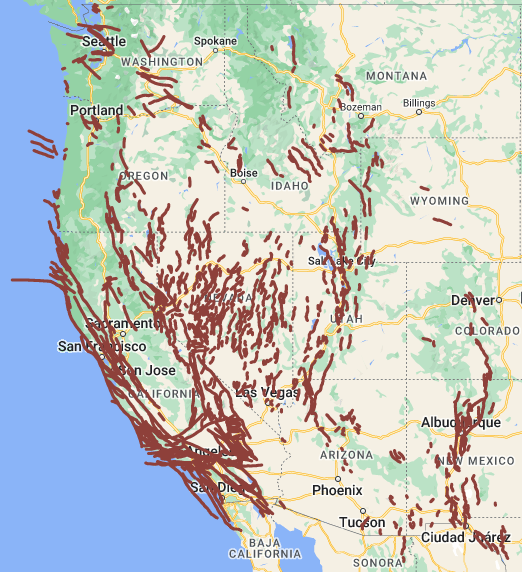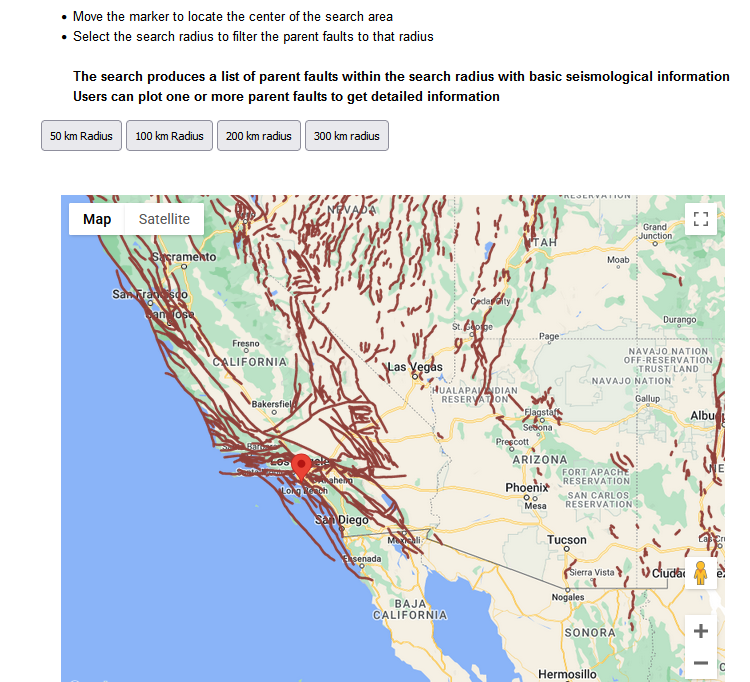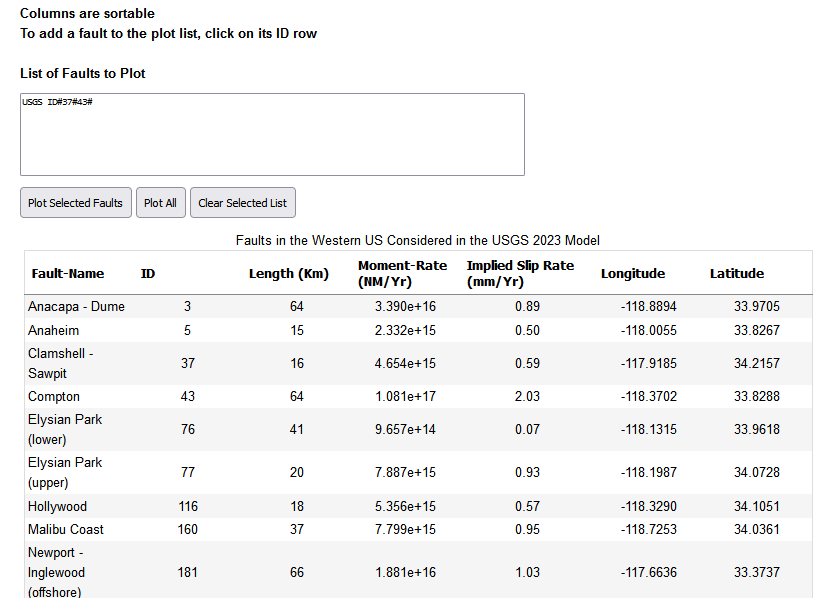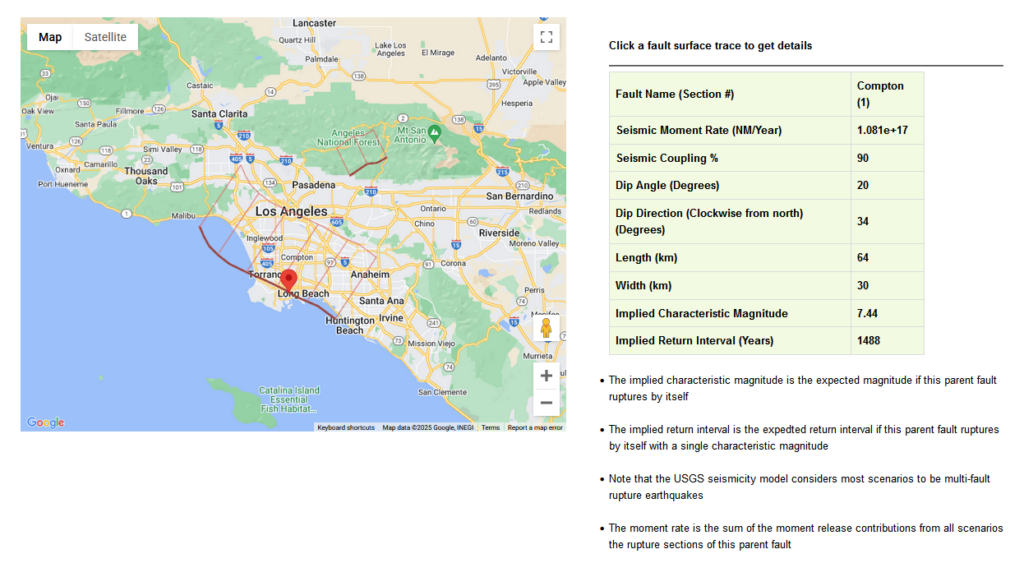Sand Box: Search/Plot Faults in Western US to Get Details
The USGS 2023 Seismicity model for the western US is formulated through 553115 earthquake scenarios. These scenarios represent the expected seismicity on 1016 regional crustal faults, which the USGS report refers to as the parent faults, see Figure 1. Many earthquake scenarios rupture multiple fault sections, reflecting decades of observations that large crustal earthquakes often rupture sections of different neighboring faults. The scenarios are optimally designed to collectively release the accumulating seismic moment rates on faults constrained by various geologic, geodetic, and seismologic data types.

Figure 1. The delineation of the parent faults used in the USGS seismicity model
Each earthquake scenario in the USGS model is described by its magnitude, geometry, rate of occurrence, and rupture mechanisms. The USGS does not provide direct information on the slip rates and moment release of the parent faults. The primary objectives of this page and the link are:
- Provide insight on the rupture complexity of the parent faults that are used to simulate earthquake scenarios in the USGS seismicity model
- Provide insight on the earthquake potential of the parent faults using the USGS-released data for the scenario earthquakes
The Search/Plot Faults in Western US to Get Details link opens a page shown in Figure 2, allowing the user to select the center and the search radius.
The search radius button runs the search module and creates a list of the parent faults within the search radius, as shown in Figure 3. The information in the table is based on processing all the USGS earthquake scenarios that rupture different segments of the parent faults within the search radius.
As shown in Figure 4, the user can select one or more parent faults to examine for more details.
- Note: The USGS does not provide info on the characteristic magnitude, moment rate, and slip rate for parent faults, as shown in Figures 3 and 4. They are estimated as follows:
- The slip rate is calculated based on the estimated seismic moment rate and the rupture area of the parent fault.
- The seismic moment rate is calculated as the sum of the contributing seismic moment release of all scenario earthquakes that rupture segments or the entire parent fault.
- The characteristic magnitude is calculated based on the rupture length and width of the parent fault. It represents the fault’s typical magnitude if it ruptures by itself.

Figure 2. Users can select the center and the radius of the search

Figure 3. List of parent faults within the search radius. Results are based on integrating information from the earthquake scenarios in the USGS database.

Figure 4. Users can click on a fault segment trace to get info on the segment ID and, fault geometry, and earthquake potential